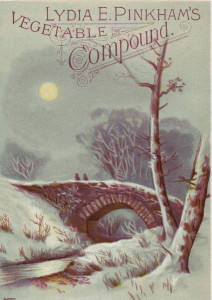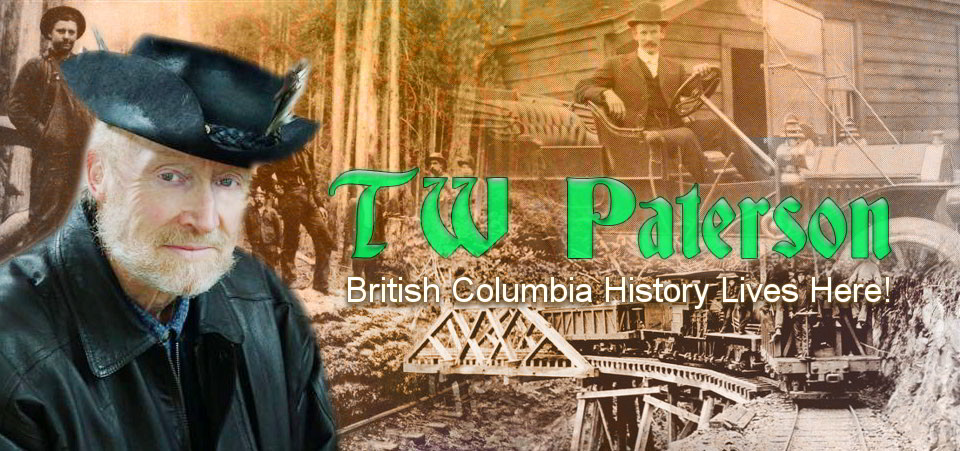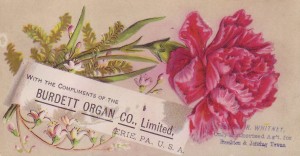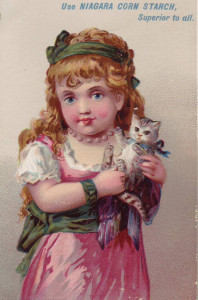Powders, potions and pills–those amazing patent medicines of old
Ayer’s Sarsaparilla–the best of its kind
To strengthen the body and brighten the mind!
Then what is more worthy of pencil or song
Than Ayer’s Sarsaparilla? IT MAKES THE WEAK STRONG

Advertisements known as trade cards (because they were collected and traded) are highly prized collectibles today–and often great examples of the printer’s art.
Where are they now, those wonderful patent medicines which promised to relieve every ailment, human and otherwise, from ‘female complaints’ to fallen arches and falling hair?
Alas, they’ve gone; gone the way of the old-fashioned drugstore (remember when they just sold drugstore items, not everything from motor oil to appliances?) and the dinosaur. Victims of advances in medicine and, more importantly, tightened drug laws, they’re part of our vanished heritage, replaced by what we now call health supplements.
One of the greatest successes in patent medicines was also its longest surviving institution, one that didn’t succumb to changing times until the 1970s. For generations Lydia E. Pinkham’s Vegetable Compound promised to relieve “those painful complaints and weaknesses so common to our best female population” throughout North America.
Now even Lydia E. Pinkham is history
Sadly, history hasn’t acknowledged the genius who received the first patent for ‘bottled’ medicine although it’s a matter of record that Richard Stoughton was granted the second such patent for his ‘elixir’ as far back as 1712.
By the mid-18th century, more than 200 so-called ‘proprietary medicines’ were being sold in Britain and in the American colonies, each of them touting a descriptive title (usually named for its discoverer/proprietor), and all claiming to cure every ailment known to man (and some as yet undiagnosed).
Bitters, vegetable compound painkillers, elixirs, liniments, balsams, tonics, panaceas…there was no complaint unworthy of the curative attentions of ‘snake oil salesmen’ and ‘medicine men’ who toured the country, hawking their wonderful wares from street corners, on horseback and at traveling ‘medicine shows.’
Mixing showmanship and oratory, these angels of mercy sold bottled cure-alls by the barrel
An irony of patent medicines was that very few of them were actually patented. Rather, manufacturers chose to register only the names of their products as patent laws required that the ingredients of each bottle be listed on the label. This, of course, would have been bad for business–giving away the formula and, of necessity, revealing the alcoholic content.
As this latter ingredient usually made up the bulk of any ‘medicine,’ manufacturers were understandably reluctant to advertise the fact. So far as consumers were concerned, discerning palates could distinguish between those medicines which were more generous in content, one popular bitters being rated, upon analysis, at 118 proof!
Significantly, many leading medicines contained opiates
The discovery that most of these so-called medicines pedaled by the gross across the North American continent and in England were composed mainly of alcohol and opiates mixed with common herbs of no proven medicinal value, and subsequent government legislation, dealt a death blow to most of the popular patent medicines, estimated to number at least 50,000 at the turn of the last century.
Those which survived were forced to change their advertisements, toning down their claims to cure every disease known to humankind. Those ads, which regularly appeared in almost every newspaper and magazine, are perhaps the most intriguing legacy of the golden age of patent medicines.
Many of them are presented as testimonials, what, today, we term ‘advertorials,’ i.e. they’re written–supposedly–in the first person, as human interest features to make them appear to be news items. Such as this testimonial that appeared in the Nanaimo Free Press in 1920, complete with the eye-catching, news-style headline and subhead,
OPERATION WAS NOT NECESSARY; “Fruit-a-tives” Restored Her to Perfect Health
In the text, Mme. F. Gareau, Montreal, tells readers that, “For three years I suffered great pain in the lower part of my body, with swelling or bloating. I saw a specialist who said I must undergo an operation. I refused.
“I heard about ‘Fruit-a-tives’ so decided to try it.
“The first box gave great relief and I continued the treatment. Now my health is excellent–I am free of pain–and I give ‘Fruit-a-tives’ my warmest thanks.”
All that for just 50 cents a box, or six boxes for $2.50 (trial size 25 cents), shipped postpaid.
Who was Mme. Gareau? Did she receive some form of remuneration for her passionate endorsement? Was she truly relieved of her pain and bloating? Who knows?
She wasn’t the only Fruit-a-tives fan
John E. Gulderson, a contractor and mason who had, for five-years, so suffered from rheumatism that there were times he couldn’t get up without assistance, and who’d tried various other patent medications, also swore by this product. Four years previously, he’d seen an ad for Fruit-a-tives and bought a box. When it brought him relief, he continued using it for six months until “the rheumatism was all gone and I have never felt it since.
“Anyone who would care to write me as regards ‘Fruit-a-tives’ I would be glad to tell them what ‘Fruit-a-tives’ did for me.”
Their claims were small when compared to that of Napoleon Girard, described as a prominent contractor and rancher in Edmonton. Chronic indigestion had been his curse for 10 excruciating years. Sometimes, he’d had to fight to get his breath and his heart would “palpitate so terribly that I was beginning to think that I had heart trouble”. The attacks became so severe that he all but quit eating because of the discomfort that inevitably followed.
Taniac not only cured his chronic indigestion, it made him feel 20 years younger
All that ended when he began to take Taniac. “It proved to be just the very thing I was needing and the change in my condition has simply been remarkable.” No longer troubled by stomach upset, he could again eat whatever pleased him. Best of all, he felt 20 years younger!
If you had a cold, Peps promised to make your breathing easier. All you had to do was dissolve a Peps tablet in your mouth and your breath would carry the medicinal pine vapour to all parts of your throat, nasal and air passages, destroying germs as it soothed and healed the inflamed membranes. Not only did it bring immediate relief but Peps fortified you against coughs, colds, sore throat, bronchitis and grippe.
Available at all drugstores and stores for 50 cents a box, or you could mail a copy of the ad with your return address and a one-cent stamp to the Toronto warehouse for a free sample.
Where are these wonderful products that would still be of benefit to us, today?
Many, of course, failed the test when they finally came under governmental scrutiny. How many, if any, really did bring relief, let alone a cure, to their users, we’ll never know. It has been surmised that their real ‘healing’ value, if such there were, lay in those ubiquitous and blatant claims of success. Meaning that, if you believed in a product’s claims strongly enough, or if you were truly desperate enough, you might imagine, or even will yourself, into believing that you felt better, even cured.
Which might have prompted you to write a hearty endorsement for publication.
Mind you, the fact that many early patent medicines were composed mainly of alcohol and opiates certainly must have made some users feel better, if only temporarily!
Real health in a bottle
So now, of course, that’s all changed for the better, right? No more phoney panaceas to treat all and sundry ailments, real or imagined? Only real, nutritional vitamins, natural and chemical, safe and effective?
In an age when pharmaceutical companies annually gross billions of dollars selling health supplements, our euphemism for vitamin pills and potions, with strict government testing, supervision and enforcement, we now get only the real goods, real health in a bottle, right?
Well… The Canadian Press recently reported that a study of vitamin supplements, including cough and cold medications, on drug and health store shelves revealed that many of them “don’t make us healthier, help us to recover faster or protect us from many of the illnesses caused by germs”. In fact, what they really amounted to–at great overall expense–was hope in a bottle.
And it’s our own fault for wanting to believe that we can improve and maintain our health by popping a pill instead of exercising and eating more healthfully. In fact, medical experts seem to agree that if we meet our nutritional needs by eating wisely, we don’t really need vitamin supplements with the possible exceptions of magnesium, calcium and Vitamins A and D.
There you have it. Maybe, as the medicine men of old discovered, it really is all in the mind
Although a dose of liquor and a dash of opium helped!


